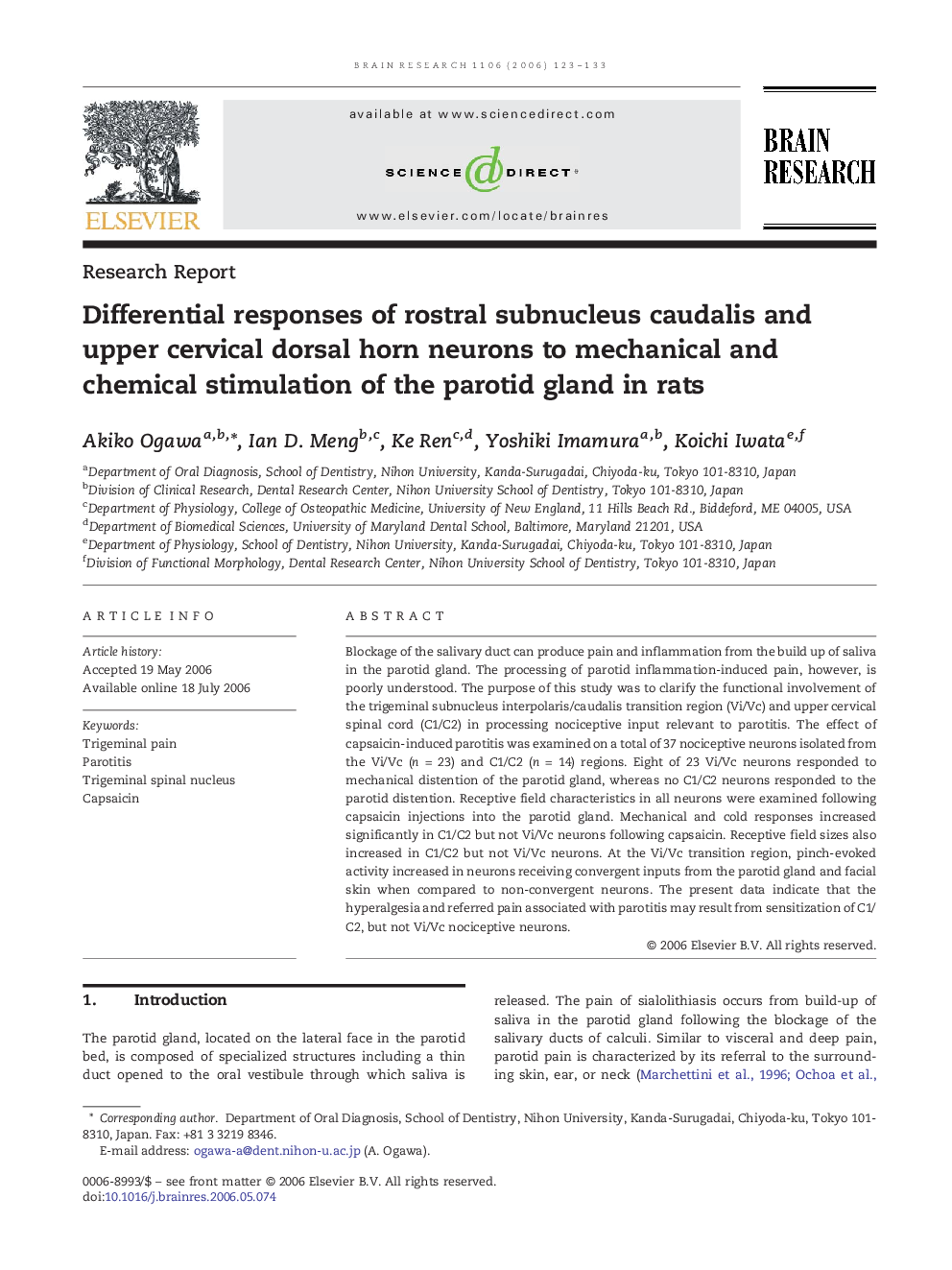| Article ID | Journal | Published Year | Pages | File Type |
|---|---|---|---|---|
| 4332538 | Brain Research | 2006 | 11 Pages |
Abstract
Blockage of the salivary duct can produce pain and inflammation from the build up of saliva in the parotid gland. The processing of parotid inflammation-induced pain, however, is poorly understood. The purpose of this study was to clarify the functional involvement of the trigeminal subnucleus interpolaris/caudalis transition region (Vi/Vc) and upper cervical spinal cord (C1/C2) in processing nociceptive input relevant to parotitis. The effect of capsaicin-induced parotitis was examined on a total of 37 nociceptive neurons isolated from the Vi/Vc (n = 23) and C1/C2 (n = 14) regions. Eight of 23 Vi/Vc neurons responded to mechanical distention of the parotid gland, whereas no C1/C2 neurons responded to the parotid distention. Receptive field characteristics in all neurons were examined following capsaicin injections into the parotid gland. Mechanical and cold responses increased significantly in C1/C2 but not Vi/Vc neurons following capsaicin. Receptive field sizes also increased in C1/C2 but not Vi/Vc neurons. At the Vi/Vc transition region, pinch-evoked activity increased in neurons receiving convergent inputs from the parotid gland and facial skin when compared to non-convergent neurons. The present data indicate that the hyperalgesia and referred pain associated with parotitis may result from sensitization of C1/C2, but not Vi/Vc nociceptive neurons.
Related Topics
Life Sciences
Neuroscience
Neuroscience (General)
Authors
Akiko Ogawa, Ian D. Meng, Ke Ren, Yoshiki Imamura, Koichi Iwata,
